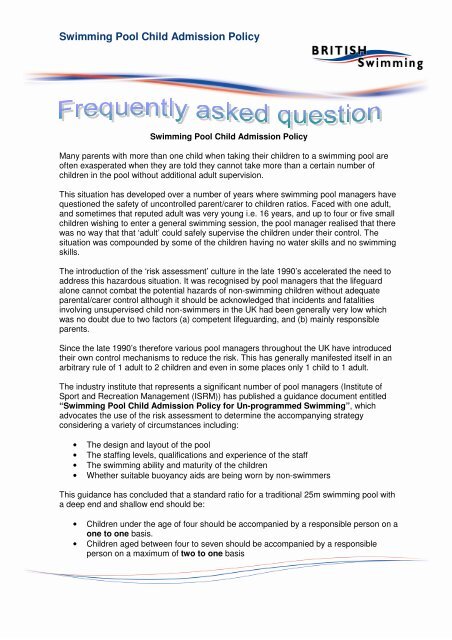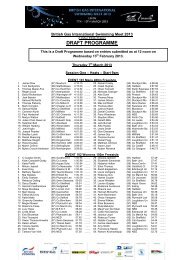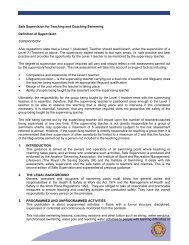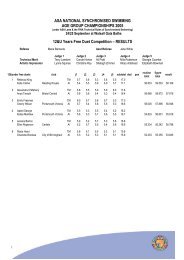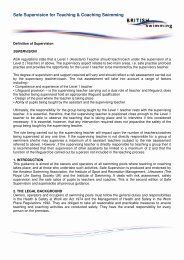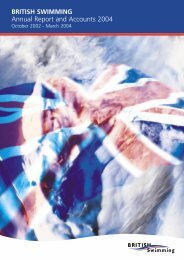Swimming Pool Child Admission Policy - Swimming.Org
Swimming Pool Child Admission Policy - Swimming.Org
Swimming Pool Child Admission Policy - Swimming.Org
You also want an ePaper? Increase the reach of your titles
YUMPU automatically turns print PDFs into web optimized ePapers that Google loves.
<strong>Swimming</strong> <strong>Pool</strong> <strong>Child</strong> <strong>Admission</strong> <strong>Policy</strong><br />
<strong>Swimming</strong> <strong>Pool</strong> <strong>Child</strong> <strong>Admission</strong> <strong>Policy</strong><br />
Many parents with more than one child when taking their children to a swimming pool are<br />
often exasperated when they are told they cannot take more than a certain number of<br />
children in the pool without additional adult supervision.<br />
This situation has developed over a number of years where swimming pool managers have<br />
questioned the safety of uncontrolled parent/carer to children ratios. Faced with one adult,<br />
and sometimes that reputed adult was very young i.e. 16 years, and up to four or five small<br />
children wishing to enter a general swimming session, the pool manager realised that there<br />
was no way that that ‘adult’ could safely supervise the children under their control. The<br />
situation was compounded by some of the children having no water skills and no swimming<br />
skills.<br />
The introduction of the ‘risk assessment’ culture in the late 1990’s accelerated the need to<br />
address this hazardous situation. It was recognised by pool managers that the lifeguard<br />
alone cannot combat the potential hazards of non-swimming children without adequate<br />
parental/carer control although it should be acknowledged that incidents and fatalities<br />
involving unsupervised child non-swimmers in the UK had been generally very low which<br />
was no doubt due to two factors (a) competent lifeguarding, and (b) mainly responsible<br />
parents.<br />
Since the late 1990’s therefore various pool managers throughout the UK have introduced<br />
their own control mechanisms to reduce the risk. This has generally manifested itself in an<br />
arbitrary rule of 1 adult to 2 children and even in some places only 1 child to 1 adult.<br />
The industry institute that represents a significant number of pool managers (Institute of<br />
Sport and Recreation Management (ISRM)) has published a guidance document entitled<br />
“<strong>Swimming</strong> <strong>Pool</strong> <strong>Child</strong> <strong>Admission</strong> <strong>Policy</strong> for Un-programmed <strong>Swimming</strong>”, which<br />
advocates the use of the risk assessment to determine the accompanying strategy<br />
considering a variety of circumstances including:<br />
• The design and layout of the pool<br />
• The staffing levels, qualifications and experience of the staff<br />
• The swimming ability and maturity of the children<br />
• Whether suitable buoyancy aids are being worn by non-swimmers<br />
This guidance has concluded that a standard ratio for a traditional 25m swimming pool with<br />
a deep end and shallow end should be:<br />
• <strong>Child</strong>ren under the age of four should be accompanied by a responsible person on a<br />
one to one basis.<br />
• <strong>Child</strong>ren aged between four to seven should be accompanied by a responsible<br />
person on a maximum of two to one basis
This guidance document lists many reasons why this standard ration can vary based on a<br />
specific site risk assessment. However it appears that there is still a general difference of<br />
opinion between the general public perceptions of what is a safe ratio and what the industry<br />
believes is a safe ratio.<br />
The diverging viewpoints between the two parties seem to be caused by pool managers<br />
applying the standard guidance without any flexibility. For example it is not unusual to find<br />
children aged seven with the ability to swim 100m in several recognised strokes and have a<br />
swimming competency greater than many adults! If the standards are applied arbitrarily<br />
many parents and children are automatically aggrieved and alienated.<br />
Interested parties are advised to read the ISRM’s national guidance note referred to above<br />
“<strong>Swimming</strong> <strong>Pool</strong> <strong>Child</strong> <strong>Admission</strong> <strong>Policy</strong> for Un-programmed <strong>Swimming</strong>”, ISBN 1 900<br />
738 21 X.<br />
The Amateur <strong>Swimming</strong> Association recognises the need for swimming pools to have a<br />
child admission policy but believe that it should not significantly inhibit the opportunity for<br />
families and groups to swim.<br />
It should also be emphasised that the national guidance note referred to above only applies<br />
to un-programmed swimming and that swimming lessons, swimming club sessions etc.<br />
have their own control mechanisms where supervision of swimming groups are controlled<br />
by agreed and appropriately qualified personnel either volunteers are employees.<br />
Readers are advised that the guidance or advice given in this information sheet is not inclusive and any decisions on swimming<br />
pool design should first be discussed with a member of the ASA’s Facilities Team. Contact details: facilities@swimming.org<br />
or telephone: 01509 640258


